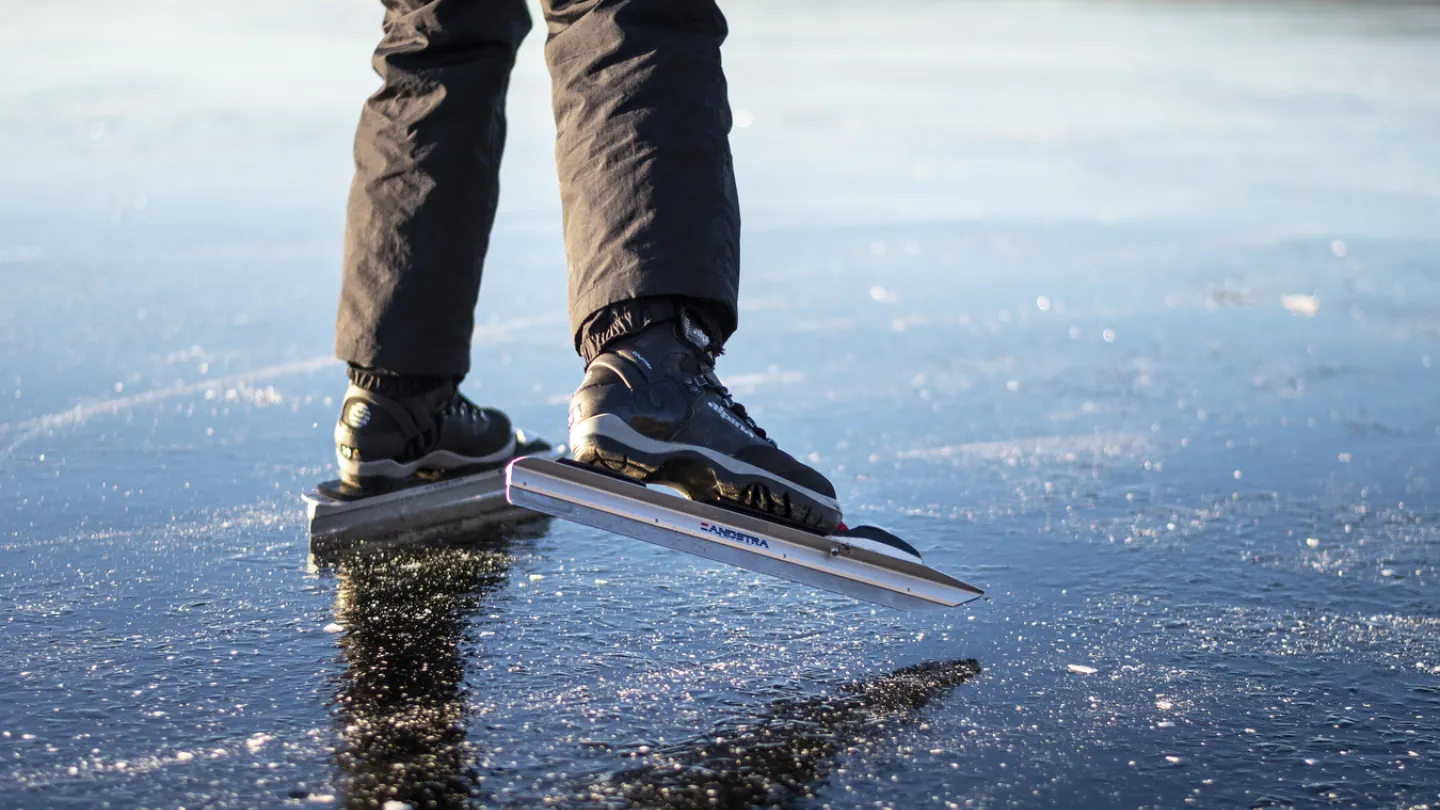Ice Safety
If you choose to skate on natural ice, safety should be your major concern and you skate at your own risk. It is important that you have safety equipment with you, such as ice claws, even when skating on prepared and marked track. We also recommend that you wear a helmet, knee-pads and gloves/mitts.
The two specific risks you are exposed to when trip skating are falling through the ice or falling and injuring yourself. It is important to familiarise yourself with the usual weaknesses of ice and be aware of changes in the ice. You should slow down on risky ice and always keep a distance of at least 10 metres from the person in front of you to reduce the risk of several of you falling through the ice, should a weakness in the ice appear.
It is essential to have the proper equipment with you when trip skating.
Always keep your ice claws and have mobile phone in a waterproof bag or container. If you are skating on unsupervised tracks you should also have; a test pole, a throw line and a flotation. A backpack with waist belt and attachment strap, as well as a change of clothes in a waterproof pack, works well as flotation. Children should always wear a lifejacket. Wearing a helmet, knee-pads and gloves/mitts reduces the risk of injury if you fall and always have one or more companions with you. A friend with a throw line could save your life if you fall through the ice.
Recommended reading in Dutch; see links by freelance sport-journalist Fred Geers. Useful tips about ice-skating on nature ice, and special conditions in Scandinavia.

